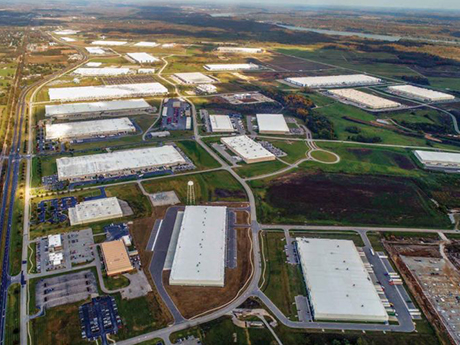The Louisville industrial market has simmered at a slow and steady pace during 2024. Continued uncertainty with debt markets, inflation and the upcoming elections have placed developers on the sidelines, and occupiers in a holding pattern.
Despite how the market feels today, Louisville remains poised for a comeback. A brief overview shows how and why the Louisville market is in the position it is today, and what to expect beyond 2024.

The past five years reveal a compelling story, one that developers, occupiers and investors alike have come to understand as they seek to develop, lease or own real estate in the Derby City. Driving much of this development and occupier activity in Louisville is the presence of the UPS Worldport, two Ford manufacturing plants, Haier’s GE Appliance Park and other manufacturers that keep suppliers, third-party logistics firms and e-commerce companies jockeying for space.
Louisville’s central location on the I-65 corridor and proximity to two-thirds of the U.S. population are also key reasons the market continues to grow as a hub for logistics, e-commerce and manufacturing. The market saw tremendous growth over the past five years, assisted by the space grab during COVID.
Since 2019 bulk inventory experienced growth of over 40 percent, and by the end of the first-quarter 2024 saw inventory surpass 90 million square feet. During this five-year period, net absorption averaged 5.3 million square feet. In terms of thoroughbred racing, 2024 market activity has tapered to what can be described as a “slow-paced cooldown” following a six-furlong sprint.
Construction completions and new starts are thin this year, trending much like the national market due to higher interest rates and economic uncertainty. As for year-to-date spec completions, 1.7 million square feet of space has been delivered, followed by just 1.24 million square feet that remains under construction as of mid-August, resulting in approximately 3 million square feet of spec construction to be delivered for 2024. For comparison, construction completions in 2022 and 2023 were 9.9 million square feet and 5.1 million square feet, respectively.
Not included in these 2024 numbers, but worth noting, are two significant build-to-suits underway in the Southern Indiana submarket. Canadian Solar recently broke ground on a 700,000-square-foot manufacturing plant, and Meta is moving dirt for a data center exceeding 700,000 square feet in size. Both developments are located in the River Ridge Commerce Center in Jeffersonville, Ind., a city in Louisville’s Southern Indiana submarket.
Compared to 2022 and 2023, leasing activity is roughly half-pace through June. Inbound requirements and local expansions are fewer given tenant sentiment as occupiers look for hope within the political winds and improved economic conditions. Overall year-to-date absorption through the second quarter surpassed 1.5 million square feet. This is a generous rebound from the first quarter that recorded an overall negative absorption of 313,000 square feet.
Prior to this, Louisville had not recorded negative absorption in 34 consecutive quarters. Amazon backfilling 931,000 square feet of vacant space in the South submarket that was previously marketed for sublease, and Arvato leasing a 711,000-square-foot building in the Bullitt County submarket were among the biggest reasons absorption flipped from negative to positive.
There is 7.5 million square feet of bulk space available on the market today, approximately 3.5 million square feet of which is recently completed spec construction spread across four submarkets. The “new” in 2023 Shelby County submarket, which lies just east of Louisville along I-64, has delivered a majority of the spec product available today. Since 2023, 1.9 million square feet of spec construction has been delivered in this submarket and two of the buildings are over 450,000 square feet in size.
The only other significant vacancy is a 631,000-square-foot, second generation building located in the Bullitt County submarket along I-65. Collectively, those are the only three existing buildings in the Louisville market that are over 450,000 square feet in size and that are ready for occupancy.
Although the Louisville market moved from a six-furlong sprint to a slower-paced mile and a quarter, limited new product deliveries and continued leasing will result in decreasing vacancy from the relatively tight 7 percent it is today. In the future, which may experience falling interest rates and deflation, speculative developers with land positions may find motivation to break ground, offering more alternatives to occupiers as they begin to act upon their own motivations for growth.
— Jake Mills, SIOR, senior associate, Cushman & Wakefield | Commercial Kentucky. This article originally appeared in the September 2024 issue of Southeast Real Estate Business.


